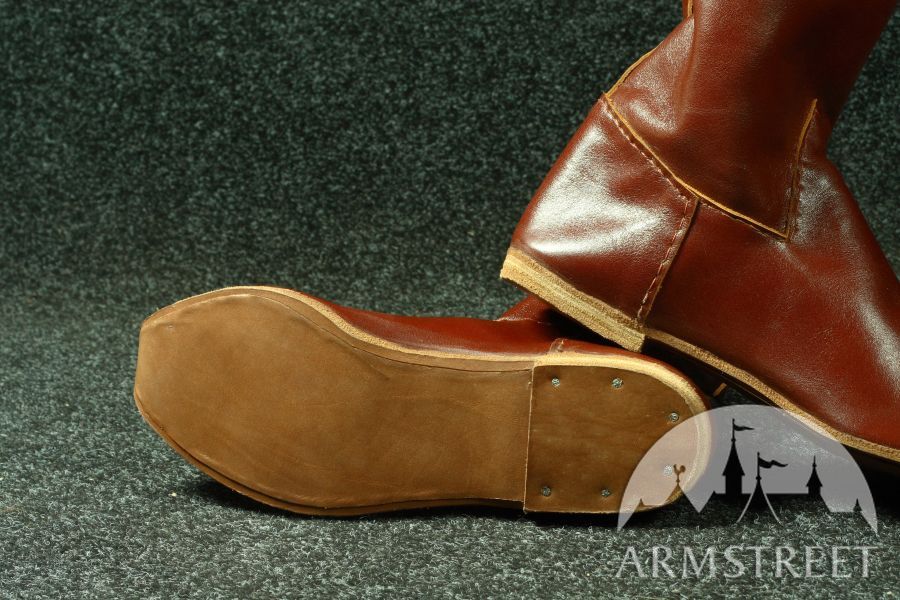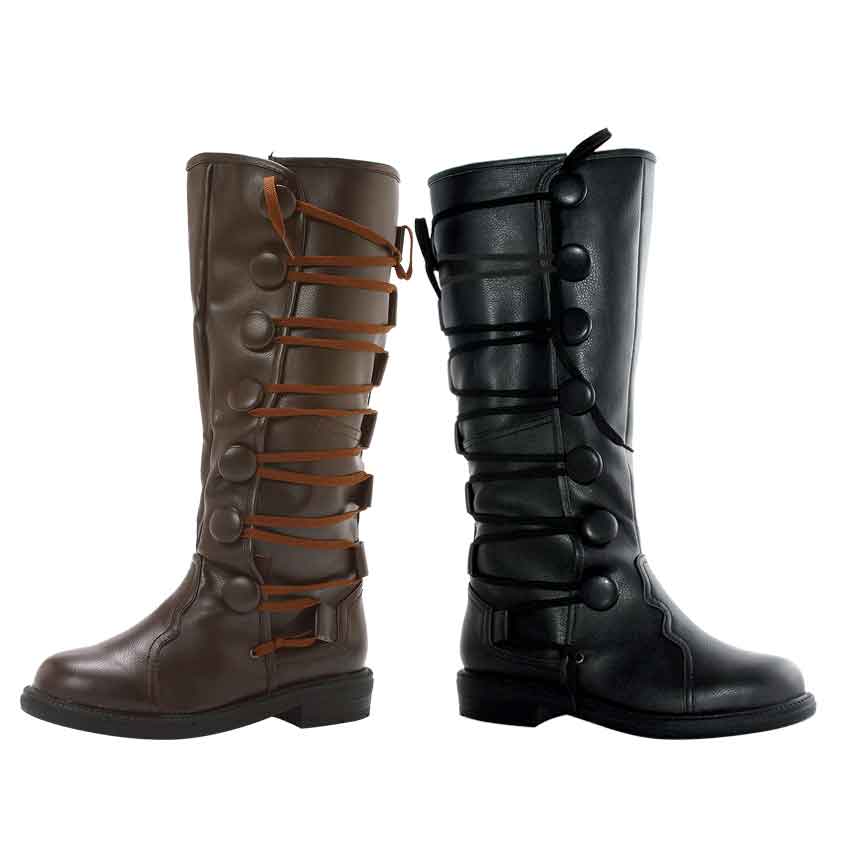

There were many ways of decorating medieval shoes. Distinctive medieval shoes with lengthened tip can be found on miniatures from 12th century onwards. In the 12th century a shape of shoe known today came to existence. The sole was mounted with nails, then other elements were sewn together. Medieval shoes were produced from cattle, sheep or goat leather. These were called caligae.įootwear fashion evolved in the Middle Ages.
BLACK MEDIEVAL BOOTS FULL
Romans worn leather shoes similar to sandals with full sole, often with studs. In the ancient times people worn usually sandals from papyrus, sometimes from leather. Such construction protected his feet again injuries and moisture and ensured comfort and hygiene.
BLACK MEDIEVAL BOOTS SKIN
Ötzi, as that is how the man was named, was wearing shoes from deer skin and bear sole. In 1991 a pair of tourists during their trek in the Alps, near Ötztal in Southern Tyrol, found frozen corpse of a man from around 3300 BC. Today we know that foot protection was popular even in prehistory. The richer a person was, the more decorative their shoe was Later, historical shoes became a representative symbol which indicated the wearers’ wealth and social status. These were produced mostly of grain leather sewn together with hempen thread. Shoes were always made of 2 parts: a sole and upper. A shoe protects foot against overload but also against water, cold and injuries. It had similar role even hundreds years ago. Nowadays we perceive footwear as an essential part of everyday clothing. tied up with a leather strap makes it easier with fitting to the leg’s width high quality in a fair price thanks to hand-sewing of visible stitchings perfect for duels and group fights (bohurt, reenactment) high upper part ensuring an extra protective layer To choose the correct size, please measure the length of the foot and length of the insole in your shoes.Ī collection of medieval shoes, including leather knight boots tied up in front, can be found in the National Museum of Denmark in Copenhagen. Please choose a size of your knight footwear from the chart below. If you want to change any of the mentioned colors (of the sole or of the upper part), please contact us to check the possibilities. A rubber sole option is available in the following colors: Fully leather shoes have a light-brown sole. Our knight footwear is available in a range of colors: natural, black, brown, and red. Colors presented on pictures may slightly differ from the final product. NOTE - knight boots are sewn from various deliveries of leather from the suppliers. MSS1431 - leather shoes with leather sole MSS1430 - leather shoes with rubber sole Soldier shoes are available in two options: Heels are manually glued to the upper, with no additional stitchings, just like inner leather insoles. All the stitches in these medieval soldier’s shoes are fully hand-sewn. In the basic version, the knight’s boots are made of one layer of soft leather, hardened with a heel and fabric insert. These historical shoes are tied up in the front with a leather strap. It works as an extra protective layer during fights. High upper parts in these medieval knight shoes reaches the calf. Medieval shoes for knight of this type are made of cowhide of at least 2 mm thickness, plant tanned or chemically tanned depending on a chosen color. Medieval knight boots will also work in everyday routines in a medieval camp or during elevated celebrations. Our knight footwear will work during both one-on-one duels and group fights, like bohurts. Medieval knight shoes are the perfect choice for knights and reenactors taking part in historical tournaments.

Knight's medieval boots are dedicated to all who care about comfort of use but also safety and versatility. This medieval shoes were designed for reenactors and medieval soldiers.


 0 kommentar(er)
0 kommentar(er)
